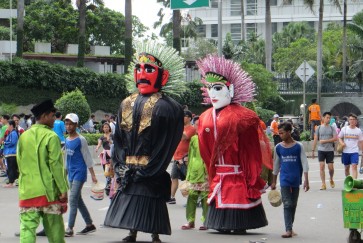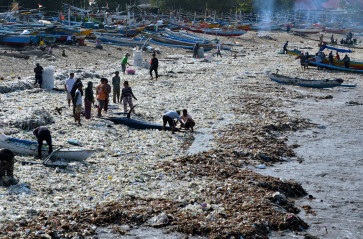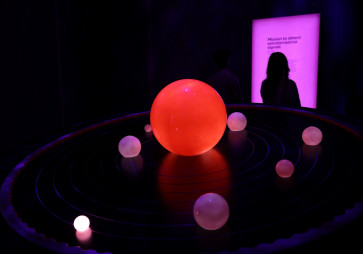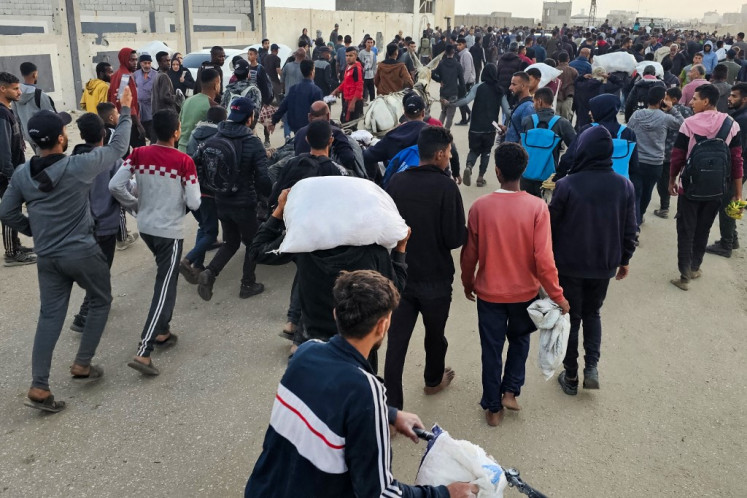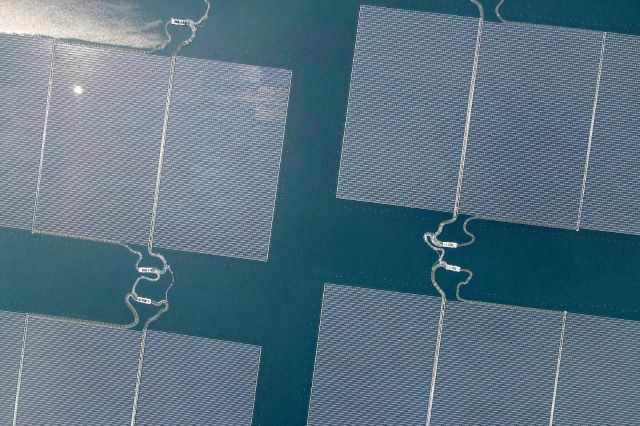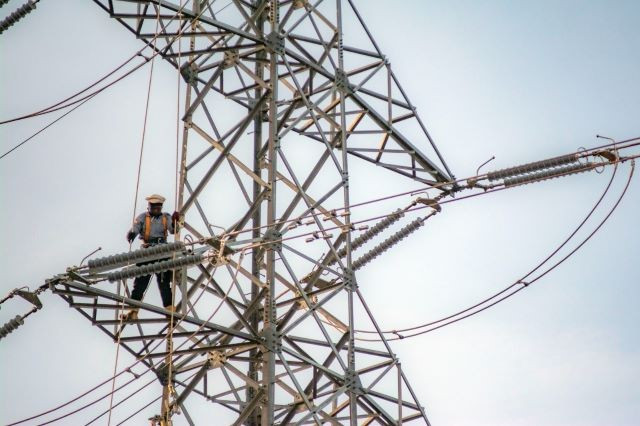City of concrete: Jakarta’s green space turned into malls, offices, apartments
With nearly 90 percent of Jakarta built over, according to official data, green space is hard to find, much of it having given way to large commercial and private development — from shopping malls and offices to luxury apartments and housing
Change text size
Gift Premium Articles
to Anyone

W
ith nearly 90 percent of Jakarta built over, according to official data, green space is hard to find, much of it having given way to large commercial and private development — from shopping malls and offices to luxury apartments and housing.
Around 10 million city residents live in areas that used to be swampy lowlands, with 13 rivers flowing through the city to the Jakarta Bay in the north.
Now, traces of their green past are only reflected in the names of such places, such as Rawa Belong (rawa literally means swamp), Rawamangun, Taman Anggrek (Orchid Park) and so on, rather than their actual condition today.
According to data compiled by the chairperson of the Community and Regional Planning Department of Alabama Agricultural and Mechanical University in the United States, Deden Rukmana, in his article titled “The Change and Transformation of Indonesian Spatial Planning after Soeharto's New Order Regime: The Case of the Jakarta Metropolitan Area” in the February 2015 edition of International Planning Studies, open green space in Jakarta decreased significantly from the New Order era and even after the Reform era.
Each era had its national spatial planning law, Law No. 24/1992 and its replacement Law No. 26/2007. The earlier law stipulated that a city must dedicate 30 percent of its area as green space.
In the 1970s, green areas made up between 40 and 50 percent of the city’s total area and as early as 2009 it had decreased to 9.3 percent.
This trend is also reflected in the city spatial plan. According to the 1965-1985 Jakarta Master Plan, green areas comprised 27.6 percent of the city, 26.1 percent in the 1985-2005 Jakarta Spatial Plan, to only 13.94 percent in the 2000-2010 Jakarta Spatial Plan.
In 2015, according to Jakarta Forestry and Public Cemetery Agency data, 9.97 percent of Jakarta comprised open green space, with 6.9 percent owned by the public sector and 3.07 percent by private entities. The agency managed approximately 3.9 percent, or around 2,665 hectares.
Where has the green space gone? It has been turned into commercial areas and residential complexes, often to serve middle- and upper-income residents.
Deden identified five areas that were previously open green spaces and water-catchment areas but starting in the 1980s until the 2000s they were converted into commercial and residential areas.
In Kelapa Gading, North Jakarta, 1,287.71 hectares of water-catchment areas have been transformed or repurposed into commercial and residential areas. In Pantai Kapuk, North Jakarta, the size of protected areas that have been repurposed is 830.82 ha.
In Sunter, North Jakarta, 1,458.89 ha of water-catchment areas have been repurposed. In Senayan, South Jakarta, it is 278.83 ha and in Tomang, West Jakarta, it is 69.61 ha.
During the big floods in Jakarta on New Year’s Day, some of the former green spaces and water-catchment areas were inundated, notably Taman Anggrek Mall and Apartments in Tomang, West Jakarta, forcing the complex to close for business for at least two weeks.
Deden said that urbanization had boosted demand for more land but dry land in Jakarta was limited. So, developers started targeting areas that were previously rather pristine: green spaces and water-catchment areas, whereas those areas had been kept clear and not initially purposed for commercial activities.
“Regrettably the Jakarta administration has not been consistent in enforcing its spatial plans,” Deden told The Jakarta Post over the phone on Wednesday.
Combined with lax law enforcement on spatial plan violations, former green spaces and water-catchment areas have inevitably become covered in concrete. In 2008 then Jakarta governor Fauzi Bowo stated it was impractical to evict commercial buildings to make way for new green spaces.
However, Deden said that the city administration had the authority to reconvert the buildings to green spaces, especially if their right to build (HGB) licenses were near expiry.
“The spatial plan [RTRW] for the city should be revised by taking into account the ecological balance,” he said.
When asked whether the city would review malls built on former green spaces, Jakarta city secretary Saefullah said that the city administration would reprimand owners of buildings on previously open green spaces if they had violated the proper permits.
Currently Jakarta relies on the 2011-2030 RTRW outlined in Bylaw No. 1/2012, which current Governor Anies Baswedan plans to revise.
During the 2012-2016 period, the Jakarta administration bought some 114.82 ha of land for green space. The biggest acquisition occurred in 2015, when the administration bought 55.17 ha.
According to the Jakarta 2017-2022 Regional Medium-Term Development Plan (RPJMD), the administration pledged Rp 10.6 trillion to open more green spaces, which should increase green space by 0.2 percent.

